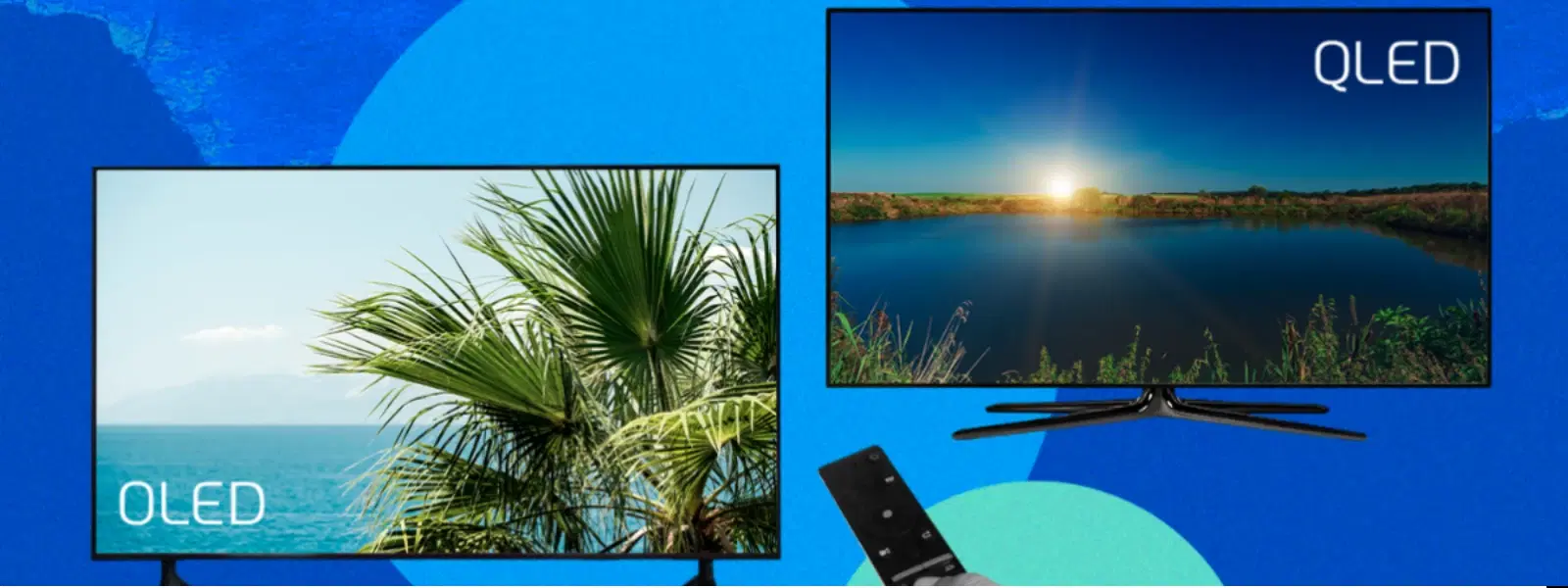
Consumer Electronics
•03 min read
Modern display technologies have transformed our viewing experiences, ushering in a new era of visual brilliance. As the debate between OLED and DLED heats up, understanding these technologies becomes crucial for making informed choices when investing in consumer electronics. This post answers frequently asked questions about OLED and DLED, offering clarity on their differences, advantages, and ideal applications.
OLED, or Organic Light Emitting Diode, is a display technology that features self-illuminating pixels. Each pixel can light up or completely turn off independently, allowing for true black levels and stunning contrast ratios. This results in exceptional picture quality, making OLED displays highly sought after for premium TVs, monitors, and smartphones.
DLED, which stands for Direct LED, is an advanced form of traditional LED technology. By employing direct backlighting, DLED displays can achieve enhanced brightness and uniformity across the screen. They are generally more cost-effective and are commonly found in budget-friendly TVs, making them a popular choice for everyday viewing.
The core technological differences between OLED and DLED lie in their light-emitting methods. OLED displays use self-lit pixels that deliver superior contrast and a wider range of colours. On the other hand, DLED relies on LED backlighting, which while effective for bright environments, does not reach the same level of contrast optimisation as OLED. This difference between OLED and DLED plays a significant role in determining which display suits your needs.
OLED excels with its impressive contrast ratio and the ability to achieve true black, leading to a high-quality cinematic experience. In comparison, DLED displays offer robust brightness levels, making them ideal for viewing in well-lit rooms where brightness is paramount. For those comparing OLED display contrast ratio and overall picture quality, the choice often depends on the intended usage environment.
When it comes to energy saving, OLED has an edge in darker scenes as it only uses power for the illuminated pixels. Conversely, DLED’s consistent backlighting can mean slightly higher energy consumption, particularly when displaying darker content. This aspect of DLED energy efficiency is an important factor for consumers mindful of energy use and operational costs.
OLED displays offer several benefits including exceptional picture quality, a slim design, and wide viewing angles. These attributes contribute to an immersive experience whether you are watching a film or engaging in high-intensity gaming. However, the premium features come at a higher cost and there is a potential risk of burn-in when static images are displayed for prolonged periods. When considering OLED panel advantages versus DLED, these factors should be carefully weighed.
DLED displays shine with their affordability and reliable brightness levels. They come with minimal risk of screen burn-in, making them a robust option for general television watching. However, the limitations include a reduced contrast ratio and less accurate colour reproduction compared to OLED. Despite the trade-offs, DLED screen features remain attractive to consumers balancing performance with cost-efficiency.
The decision between OLED and DLED ultimately depends on your individual needs. For instance, if your budget is more constrained, DLED’s affordable pricing offers excellent value. In contrast, if you value superior picture quality and plan to use your display in a darker environment, OLED is likely the better option. Additionally, specific uses such as immersive gaming or enjoying cinematic content can benefit greatly from OLED's visual finesse, while casual viewing in bright spaces may be better served by DLED.
When placing these technologies alongside other emerging display solutions like QLED, LED, and MicroLED, the key points to note include the differences in backlighting technology and picture performance. For instance, while LED backlit vs OLED discussions highlight differences in image uniformity and vibrancy, similar considerations are relevant when comparing OLED vs DLED vs QLED. Each has its unique strengths and is designed to cater to varying preferences and environmental needs.
Insight Corner: OLED’s True Black Levels
Did you know? OLED panels achieve unparalleled true black levels because each pixel can turn off completely, unlike DLED screens that rely on backlighting. This makes OLED displays ideal for vivid cinematic experiences and immersive gaming sessions.
OLED offers superior picture quality, contrast and colour accuracy, while DLED excels with affordability and impressive brightness levels.
A DLED display uses direct LED backlighting, enhancing brightness and uniformity for visually striking performance in various lighting conditions.
OLED displays, with reduced blue light emission and better contrast, can often be gentler on the eyes compared to DLED screens.
DLED displays generally offer a longer lifespan due to a lower risk of burn-in, though improvements continue in OLED durability vs DLED.
Emerging technologies such as MicroLED and QLED present distinct benefits, yet OLED currently stands out for its unmatched picture quality.
In summary, both OLED and DLED display technologies serve unique purposes. OLED offers a superior viewing experience with remarkable picture quality and vibrant contrast, ideal for immersive environments. Conversely, DLED offers strong brightness performance and affordability, making it a pragmatic choice for everyday use. Evaluating your budget, viewing habits, and specific needs will guide you in choosing the perfect display technology. With robust features and the added value of NeuCoins rewards, Tata Neu continues to be a trusted platform for exploring consumer electronics that cater to every lifestyle.